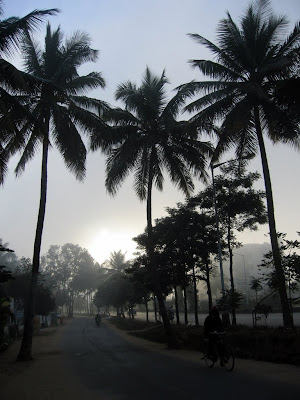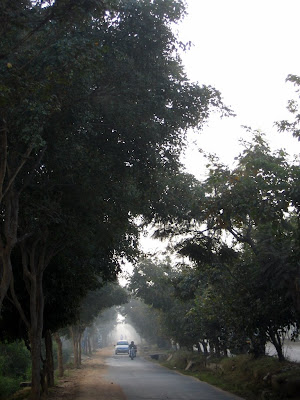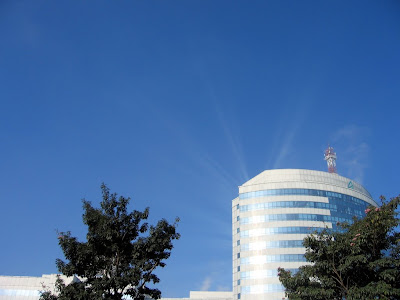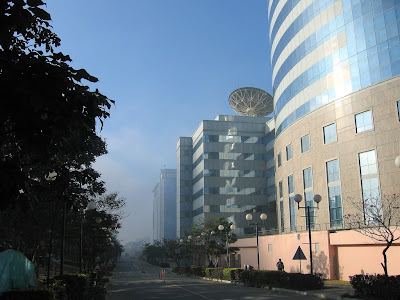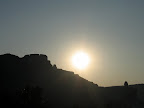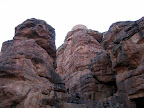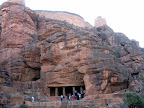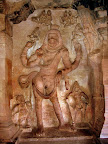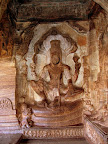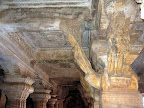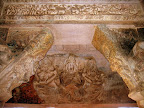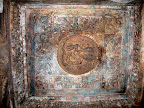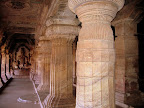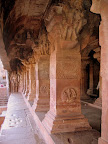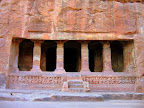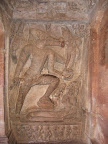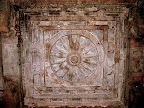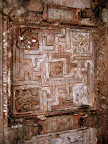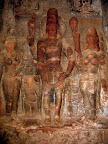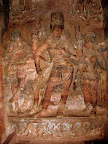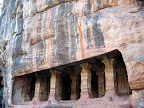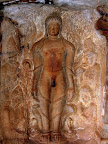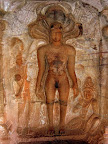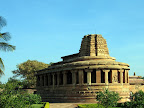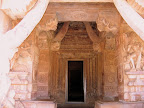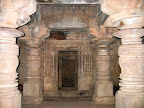Ooru neeru event was organized by Bangalore City Project an NGO involved in raising awareness about the cultural infrastructure of Bangalore. This was the 4th such event organized by BCP. I didn’t know of the first two and I was late for the 3rd one (they accept limited number of participants for each event).
Ooru neeru event was also coordinated by Rainwater Club, an NGO working on water conservation. It was a guided tour of India’s first piped drinking water supply project. The main locations that we visited were Hessargatta lake, Turubanahalli and Soldevanahalli. Ooru neeru translates to city water.
Arkavathy River
Hessargatta Lake is one of the 178-180 lakes feed by the Arkavathi River. The river has its origins in the Nandi Hills range and eventually joins the Cauvery River. Until a few years back it used to flow for more than nine months in an year, filling up all the lakes on it path. The other prominent lake that also happens to be in its path is the Thipegondanhalli lake (T.G.Halli). Arkavathi River is now completely dried up.
Hessargatta Lake
Hessargatta Lake is a man made lake built in the year 1532. It was latter expanded in 1894 to supply water to Bangalore city. Two villages (one of them Hessargatta Village itself) was moved to a different location for expanding this lake – the remains of which can now be found in the lake bed. Hessargatta Lake along with two other small lakes Byatha Lake and Kakola Lake has a total water storage capacity of 1.1 TMC of water. The lake is around 4000 acers and surrounded by state and central government agencies – the main reason to have survived the land sharks. Unfortunately except for the water in a small 1000 sqft pond on the lake bed, there is not a single drop of water. This lake was completely filled for the last time in 1988 and it has been almost dry from 1994. Some of the older generation people who were there talked about the vast, grandeur, beauty of the lake when it was full of water. I am sure it would have been a sight to behold.
An interesting structure to watch out for in the lake is Saddle Siphon. As the water in the lake reached its maximum level, it used to flow into the siphon. Due to the structure of the siphon a vacuum was created inside it, as a result more water was sucked in and released downstream. The siphon pumped out water from the lake at a rate 5 times more than the normal flow of water. This effectively maintained the water lever in the lake and prevented the flooding of the surrounding areas.
Soldevanahalli and Turabanahalli
Soldevanahalli is India’s oldest pumping station. Bangalore apart from being the first city to be electrified was also the first city to get piped water. On 7th august 1986, water was pumped for the first time from Soldevanahalli to Bangalore (Malleshwaram water treatment plant). Water from Hessargatta Lake flowed to Soldevanahalli via Turubanahalli due to gravity. There are still remnants (90% of this has now been destroyed) of the Roman style water ducts that brought water from the Lake to Soldevanahalli. The water duct was latter replaced with a pipeline. From Sodevanahalli it was then pumped by steam powered pumps initially and then with electric pumps to Bengaluru. There were totally 4 pumps (3 active and 1 standby) that were used. Each of these pumps was a 250 HP pump with a 15 inch input pipes. The pumps and the pipes can still be seen in the station. Initially two pumps that were used to supply water to the military establishments and residences in Bengaluru. Latter on a third pump was added to cater to the industrial need (HMT and BHEL were the main consumers) of Bengaluru.
Water Conservation
Some of many reasons that lead to the drying up of Arkavathi River and then the Hessargatta Lake are - rapid urbanization, deforestation, granite quarrying, sand mining and over exploitation of ground water.
Urbanization and deforestation go hand in hand. As a result of urbanization, the forest cover around Dodaballapur and the Nandi Hills region drastically came down. This used to be the catchment area for the river and subsequently to the lakes in its path.
Sand mining (which is now finally banned in the whole of Kolar district) is another main reason for the rivers to dry up. The presence of sand in the river bed prevents the flow off (avoiding flash floods) of the water and helps in replenishment of ground water. The sand prevents the spreading out of water and effectively reduces losses due to vaporization. Almost all the river beds in Kolar district have been cleared of Sand. Even after the ban, illegal mining is still very rampant.
The drilling of bore wells has had a cascading effect on the drying up of the lake. Water table which was once as high as 70 feet is now more than 700 feet and in some areas more than 1000 feet with in the vicinity of the lake. Unscientific planning by the government has also added to it. When the water level in lake started reducing, around 32 borewells were drilled by BWSSB on the lake bed to pump out water. This was the final nail on the coffin.
Mahesh Bhatt a photo journalist and a localite along with other people in the region has been spearheading a movement to revive this lake. They are trying to clear up clogged water paths to help water flow into the lake. Initial steps have lead to some encouraging results. A couple of years back, after the silt was cleared from the water paths leading to the lake, water started collecting in the lake during the monsoon season.
Bhoomi Thayi Balaga (friends of mother land) had organized a small folk concert as part of this event to spread awareness about water conservation.
Location
Hessargatta Lake is around 30 KM from Bangalore. To reach Hessargatta Lake take NH-4,(via Yeshwanthpura), after Peenya take a right to Hessargatta road. You will first reach Soldevanahalli Station, proceeding further you will see the Water Ducts near Turbanahalli Village and still futher you will reach the Lake.

